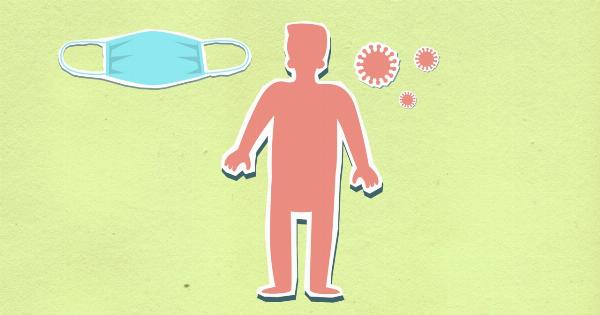In recent years, there has been a significant focus on the role of vaccinations in preventing the spread of infectious diseases.
This is especially relevant in the context of educational settings, such as schools, where large numbers of students come into close contact with each other on a daily basis. Vaccinations have played a crucial role in reducing the incidence of school-acquired infections, protecting individuals and the wider community from the risks posed by these diseases.
The Benefits of Vaccinations in Schools
Vaccinations have proven to be an effective strategy in reducing the transmission of infectious diseases within schools.
By vaccinating students against common pathogens, outbreaks of diseases like measles, mumps, rubella, and chickenpox can be prevented or minimized, keeping students healthy and minimizing school disruptions. Vaccinations not only protect vaccinated individuals but also create a phenomenon known as herd immunity.
Understanding Herd Immunity
Herd immunity occurs when a significant proportion of the population is immune to a particular infectious disease. This indirectly protects those who are not vaccinated or unable to receive vaccines due to medical reasons.
In schools, where there is a high density of susceptible individuals, achieving herd immunity becomes critical in preventing the spread of infections. By ensuring a high immunization rate among students, the likelihood of an outbreak or epidemic within the school is greatly reduced.
The Role of Vaccination Policies in Schools
Vaccination policies in schools are essential in maintaining a healthy and safe learning environment. These policies outline the mandatory vaccines that students must receive before enrollment or within a specified timeframe.
By enforcing vaccination requirements, schools can effectively prevent the transmission of diseases and protect the health of their students. Vaccination policies also serve to educate parents and students about the importance of immunizations and the potential risks associated with non-compliance.
Countering Vaccine Hesitancy
While vaccinations have proven to be safe and effective, there has been a growing movement of vaccine hesitancy in recent years. Some parents may have concerns about the side effects, perceived risks, or misinformation surrounding vaccinations.
Debunking myths, providing accurate information, and promoting the benefits of vaccinations is crucial in countering vaccine hesitancy. Schools can play a vital role in educating parents and students about the importance of vaccinations and addressing any concerns they may have.
Evidence-Based Approach to Vaccination Policies
Developing vaccination policies based on scientific evidence is essential to ensure their effectiveness.
Public health organizations, such as the Centers for Disease Control and Prevention (CDC), regularly review and update vaccine recommendations for schools. These recommendations are based on extensive research and clinical trials.
School administrators and policymakers should rely on these evidence-based guidelines to establish robust vaccination policies that prioritize the health and well-being of students.
Collaboration between Schools and Healthcare Providers
Collaboration between schools and healthcare providers is vital in promoting vaccinations and preventing school-acquired infections.
Schools can partner with local healthcare centers or public health departments to organize vaccination clinics or provide immunization resources to students and their families. Regular communication and coordination between schools and healthcare providers can foster a supportive environment for vaccinations and reinforce the importance of staying up to date with immunizations.
Increasing Access to Vaccinations
Ensuring equitable access to vaccinations is crucial in preventing school-acquired infections. Schools can work with healthcare providers to identify and address barriers to immunization, such as cost, transportation, or lack of awareness.
By offering convenient and affordable vaccination options within the school setting, more students can be vaccinated, reducing the overall risk of infections. Collaboration with community organizations and government agencies can also help extend the reach of vaccination programs and promote accessibility.
Monitoring and Surveillance
Regular monitoring and surveillance of vaccination coverage and infectious disease incidence within schools are essential for effective disease prevention.
By collecting data on vaccination rates and monitoring the occurrence of school-acquired infections, schools and public health authorities can identify areas of improvement and take necessary actions to address any gaps in immunization or control outbreaks promptly. Surveillance systems can also help identify emerging infectious diseases and guide the development of vaccination strategies.
Educating the School Community
Educating the school community, including teachers, staff, parents, and students, about the importance of vaccinations is crucial in building a culture of health and safety.
Schools can organize workshops, information sessions, or distribute educational materials that outline the benefits and facts about vaccinations. Engaging with the school community through effective communication channels, such as newsletters, websites, or social media, can help disseminate accurate information and encourage vaccination compliance.
Conclusion
Vaccinations play a critical role in preventing school-acquired infections by reducing the transmission of infectious diseases within educational settings.
Achieving high immunization rates through vaccination policies, countering vaccine hesitancy, and promoting evidence-based strategies are crucial in ensuring the health and safety of students. Collaboration between schools and healthcare providers, coupled with increased access and monitoring, can further enhance the effectiveness of vaccination programs in schools.
By prioritizing vaccinations, schools can create a healthier environment for learning and protect the well-being of their entire community.






























